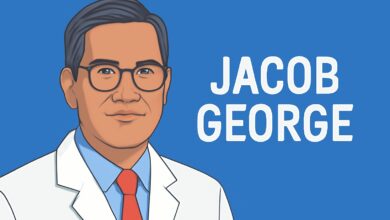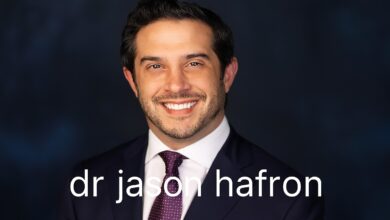George M. Martin: The Visionary Pioneer of Human Aging and Genetic Research
Unveiling the Legacy of a Scientist Who Transformed Biogerontology Forever

George M. Martin’s Profound Legacy in Human Aging Research
George M. Martin, a name revered across the scientific world, was more than just a biogerontologist—he was a visionary who helped unlock the mysteries of human aging and age-related diseases. With a career spanning over six decades, Martin’s influence shaped everything from Alzheimer’s research to understanding genetic mechanisms of lifespan. His work laid the foundation for the modern field of biogerontology, and his passion for science, education, and mentorship left an enduring impact.
Early Life and Education: The Roots of Scientific Curiosity
Humble Beginnings and Inspirational Childhood
George M. Martin was born in 1927 in New York City. His father was a police officer, and Martin’s early life was shaped by economic hardship and post-Depression realities. Despite limited resources, he developed a deep curiosity about the natural world and a hunger for learning.
Academic Journey and Medical Training
Martin pursued higher education at the University of Washington, earning a Bachelor of Science in Chemistry in 1949 and his Doctor of Medicine in 1952. This dual foundation in both the physical sciences and medical practice became the cornerstone of his multidisciplinary approach to research.
Career Path: From Pathologist to Pioneer of Aging Research
Joining the University of Washington Faculty
In 1957, Martin began his lifelong tenure at the University of Washington. Initially joining as a pathologist, he quickly rose through academic ranks, earning respect for his innovative research and dedication to teaching.
Groundbreaking Roles and Research Programs
He founded the Clinical Cytogenetics Laboratory, the Medical Scientist Training Program, and played a pivotal role in establishing the Alzheimer’s Disease Research Center. Through these platforms, Martin led research into the genetic and cellular mechanisms behind aging and neurological disorders.
Scientific Contributions: Unlocking the Code of Aging
Biogerontology and Segmental Progeroid Syndromes
One of Martin’s most remarkable achievements was his exploration of segmental progeroid syndromes—rare genetic disorders that mimic accelerated aging. These studies provided a blueprint for understanding the natural aging process in humans, allowing researchers to connect specific genes to longevity and disease resistance.
Genetic and Epigenetic Insights
Martin was among the first scientists to suggest that both genetic predispositions and environmental epigenetic factors play key roles in aging. He popularized the concept of “antigeroid loci”—genes that protect against aging and age-related diseases. His findings bridged gaps between molecular biology, evolutionary theory, and clinical practice.
Leadership and Recognition in the Scientific Community
Advisory and Leadership Roles
Throughout his career, George M. Martin served in leadership capacities at esteemed organizations such as the American Federation for Aging Research, the Tissue Culture Association, and the Gerontological Society of America. His work helped shape national aging policy and scientific funding priorities.
Lifetime Mentorship and Awards
Recognizing his lifelong mentorship, the American Federation for Aging Research created the George M. Martin Award for Excellence in Mentoring. This annual award honors scientists who demonstrate Martin’s values of integrity, generosity, and scientific rigor.
Legacy, Death, and Impact on Future Generations
Passing of a Pioneer
George M. Martin passed away in 2022 at the age of 95. His death marked the end of an era in biogerontology, but his scientific legacy continues to inspire new generations of researchers and healthcare professionals.
A Lasting Influence
His influence lives on in the form of international aging research initiatives, policy frameworks, and institutions he helped shape. Modern research into Alzheimer’s, cancer, and age-related degeneration owes a debt to his foundational work.
George M. Martin in Numbers
| Category | Details |
|---|---|
| Full Name | George M. Martin |
| Date of Birth | 1927 |
| Date of Death | 2022 |
| Field | Biogerontology, Genetics, Pathology |
| Education | B.S. Chemistry, M.D. (Univ. of Washington) |
| Major Institutions | University of Washington, AFAR |
| Known For | Aging research, Alzheimer’s genetics |
| Awards | Lifetime Achievement, Mentorship Award |
| Nationality | American |
| Source of Income | Medical Research, Academia |
| Ethnicity | Caucasian |
| Marital Status | Not publicly documented |
| Children | Not publicly documented |
Even after his passing, Martin’s name remains influential in academic journals and international research conferences. Current projects in the fields of DNA damage response, epigenetic silencing, and genetic therapies for aging directly trace back to Martin’s pioneering work. Several Ph.D. theses and ongoing NIH grants cite his research as a primary source of guidance and validation.
Useful FAQ
Who was George M. Martin?
George M. Martin was a renowned American biogerontologist, physician, and professor known for his groundbreaking research on aging and genetic disorders.
What is George M. Martin famous for?
He is best known for his studies on segmental progeroid syndromes and his contributions to understanding the genetics of aging and Alzheimer’s disease.
What institutions did he work with?
He spent most of his career at the University of Washington and was also involved with AFAR and various aging research organizations.
What awards did George M. Martin receive?
He received numerous awards throughout his life, including lifetime achievement honors and a mentoring award established in his name.
When did George M. Martin die?
He passed away in 2022 at the age of 95.
Conclusion: Honoring a Giant in Aging Research
George M. Martin was not just a scientist—he was a guiding force in reshaping how the world understands aging. From his early days as a curious child in New York to his decades of research and mentorship at the University of Washington, his contributions continue to illuminate the path for future scientific breakthroughs. His legacy as a mentor, researcher, and visionary will forever be etched in the annals of medical history




